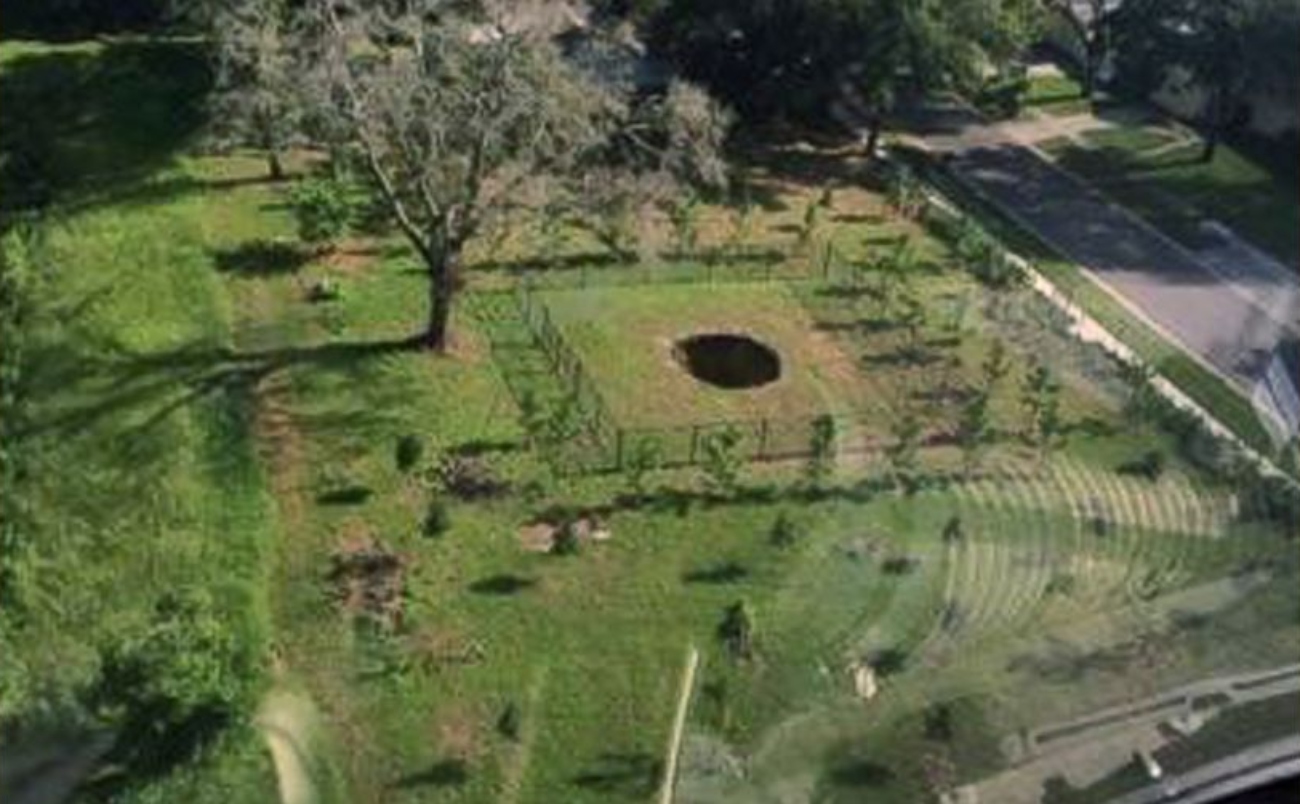A sinkhole in Seffner, Florida, has reopened for the third time in 10 years after swallowing a man in 2013.
Florida Sinkhole Opens Back Up
Hillsborough County Sheriff’s Office says it is safe for residents of a Seffner neighborhood to remain in their homes despite a sinkhole that has reopened at the same site that swallowed a Seffner man while he slept in 2013.
It’s located on a county conservation property at 240 Faithway Dr. in Seffner, Florida.
John-Paul Lavandeira, director of Hillsborough County’s code enforcement division, told reporters that he judged the hole by eye to be around 12 feet by 12 feet wide.
The same sinkhole first opened up in February 2013, taking the life of 36-year-old Jeffrey Bush, whose body has never been recovered.
According to Tampa news station ABC Action News, the sinkhole had opened up beneath his bedroom while he slept. Bush’s brother, Jeremy, had attempted to save him before being rescued by police, the BBC reported at the time.
Officials Responded To A Call On Monday
Hillsborough County Fire Rescue, County engineers, and Code Enforcement were sent to the property where the sinkhole reopened Monday and are assessing the extent of the void, officials said.
The Sheriff’s Office told neighbors it is safe to remain in their homes but warned residents to stay away from the site until the hole is repaired.
A Hillsborough County spokesperson said that a decision would be made later on Thursday on whether to use the same technique as before to fill the hole.
Florida’s Sinkhole Alley
While sinkholes are found worldwide, the potentially deadly phenomenon is more prevalent in Florida due to the makeup of its bedrock. Sinkholes are particularly common in Pasco, Hernando, and Hillsborough counties—which are collectively known as the state’s “Sinkhole Alley.”
Sinkholes are created when moving groundwater creates a cavity under the surface that grows until the ground above it collapses. They can appear naturally or due to burst water mains or leaking sewers.
Florida, and particularly the region around Tampa, sits on a mix of porous carbonate rocks and water-soluble minerals that erode quicker than other rock formations, allowing for a greater number of sinkholes.
Get the news you need at It’s On News.


